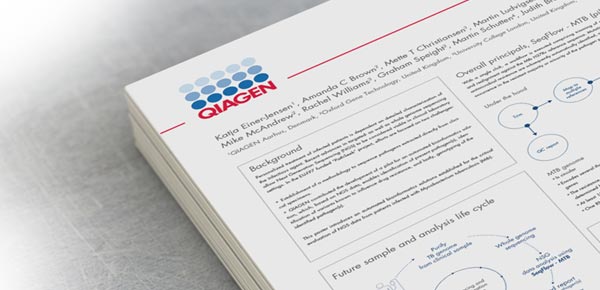


















At AGBT 2015, Katja Einer-Jensen, QIAGEN Bioinformatics, will be presenting poster #210: Rapid identification of tuberculosis mutations associated with antimicrobial resistance using NGS technology.
The poster session will take place on Thursday February 26, 2015, in Collier Hall at 1:00 PM - 2:30 PM.
Personalized treatment of infected patients is dependent on detailed characterization of the infectious agent. Recent advances in targeted - as well as whole genome sequencing - allow Next Generation Sequencing (NGS) to be considered viable in clini- cal laboratory settings. In the EU-FP7 funded “PathSeek” project, efforts are focused on two challenges: 1) Establishment of a meth- odology to sequence pathogens extracted directly from clinical specimens; 2) Development of an automated bioinformatics solu- tion, which, based on NGS data, enables identification of pres- ent pathogen(s), identification of variants known to influence drug resistance, and lastly, genotyping of the identified pathogen(s).
This presentation introduces an automated bioinformatics solution established for the critical evaluation of NGS data from patients infected with Mycobacterium tuberculosis (Mtb). In a single workflow, raw sequence data is trimmed, mapped and realigned against the Mtb H37Rv reference sequence. Mutations known to be associated with antimicrobial resistance are subsequently automatically identified, and categorized depending on their occurrence in the resistant majority or minority of the population. In the same workflow, the consensus sequence of predefined targeted regions is reported and used for generating a phylogenetic tree showing the genetic grouping of the analyzed sample.
The solution is easy to use and delivers unified reporting and documentation in condensed views, aimed at novice bioinformatics users. The various outputs formats in addition to a simple report include overview tables and data visualization, which offers experienced users the option for a detailed review of the findings.
The decision support tool presented here has the potential to revolutionize patient management by delivering all the data required for truly personalized infectious disease treatment when compared to the currently practiced empirical treatment of MTB.
In addition to detecting MTB, this decision support software tools is currently being adapted to enable the characterization of viral pathogens.